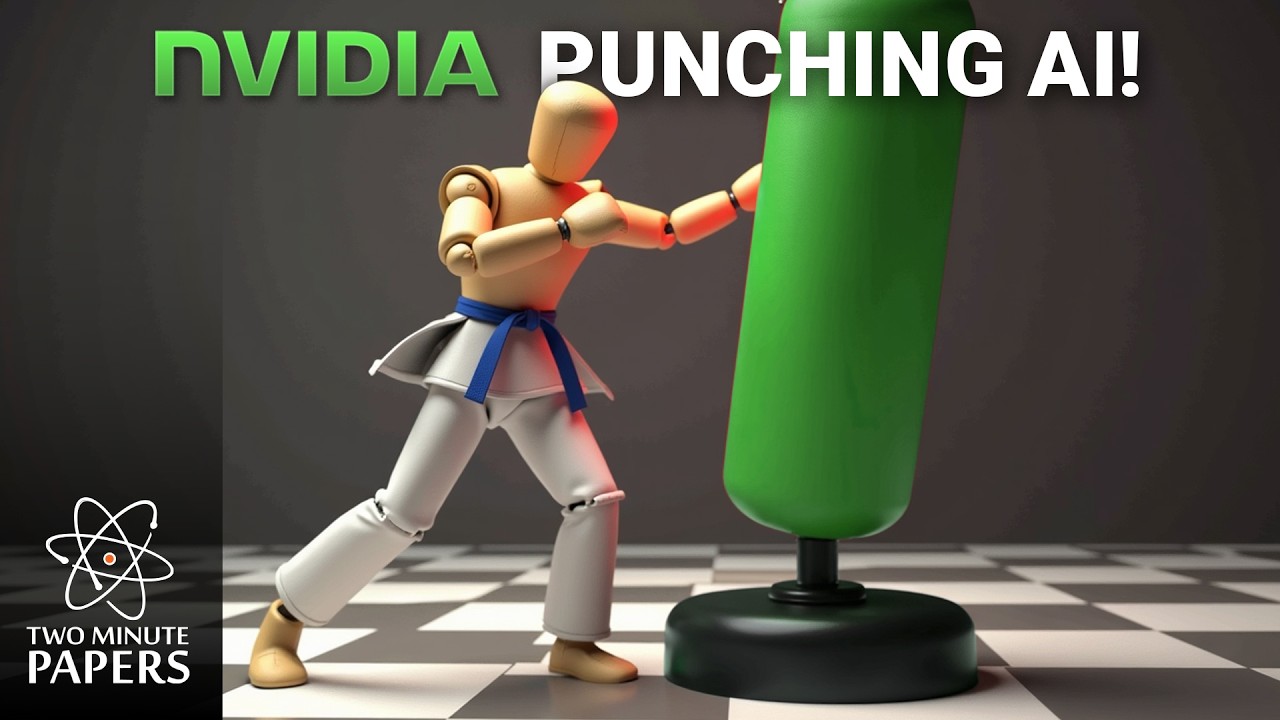The video presents NVIDIA’s innovative AI technique, developed in collaboration with four universities, which allows users to animate virtual characters using text prompts, significantly improving the realism and consistency of animations. While the AI can generate various movements, such as punching, the animations still require refinement, and the presenter encourages viewers to consider the future potential of this technology in gaming and virtual environments.
The video discusses a groundbreaking AI technique developed by NVIDIA in collaboration with four universities, which allows users to animate virtual characters through text prompts. This new method enables the creation of believable animations starting from noise, a significant advancement over previous techniques that struggled with consistency and realism. The presenter, Dr. Károly Zsolnai-Fehér, highlights the challenges faced in generating character animations and how this new approach addresses those issues.
The core of the innovation lies in a system called CLoSD, which combines a diffusion model with a new controller system. This collaboration helps to correct artifacts and inconsistencies that were prevalent in earlier models. The video showcases how the AI can generate various movement sequences, such as walking, hopping, or even performing specific actions like sitting down or attacking, all based on simple text instructions. This flexibility opens up exciting possibilities for character animations in virtual environments.
Despite the impressive capabilities of this new AI, the presenter notes that the animations are not yet perfect. For instance, while the character can throw punches, the movements still appear somewhat wobbly and lack the intensity one might expect from a more realistic portrayal. The video humorously suggests that these punches might be more suitable for a virtual retirement home than a serious combat scenario, indicating that there is still room for improvement.
The video emphasizes the rapid pace of advancements in AI and computer graphics, encouraging viewers to consider the future potential of these technologies. Dr. Zsolnai-Fehér points out that the progress made in just a year is remarkable, and he invites viewers to imagine what future research could yield. The presenter also highlights the importance of the research paper, which documents the techniques used and their effectiveness, showcasing a significant increase in success rates for character movements.
Finally, the video concludes by noting that the research paper and source code are available for free, promoting transparency and collaboration in the field. The potential applications of this technology in video games are vast, as characters may soon be able to perform actions that were previously hard-coded. The presenter encourages viewers to share their thoughts on how they would use this technology, fostering engagement and discussion within the community.
